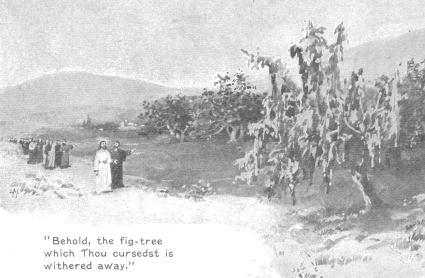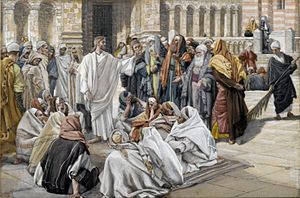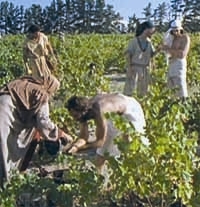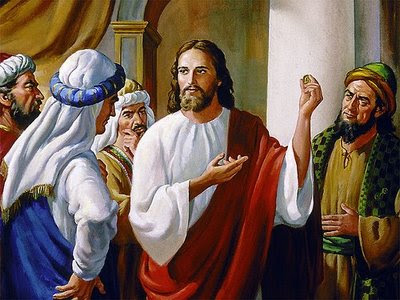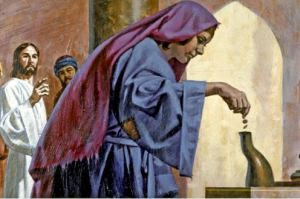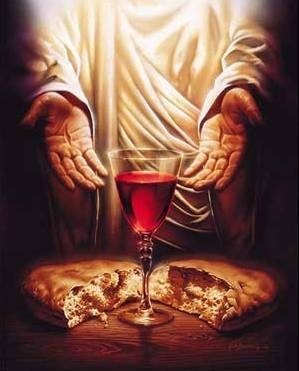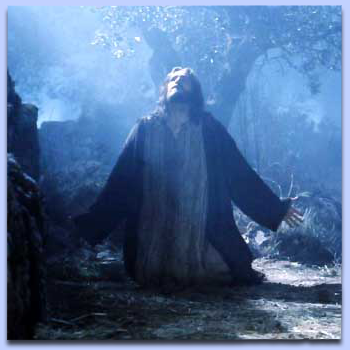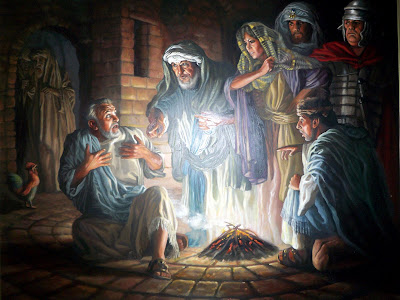Pegg
Jehovah our God is One
The first century Jewish calendar has coincided with our current calendars this year, so each day of the Memorial season is exactly the same day as it was for Jesus and his disciples.
Im going to present each day of the final week of Jesus life with the passage of gospel showing what occurred on each day. The first day begins at Saturday Nisan 9th. The day's on the jewish calander begin in the evening and end the following evening. So Saturday Nisan 9th begins on Saturday March 31st at sundown & ends Saturday March 31st at Sunset.
Saturday Evening Nisan 9 - Saturday March 31st 2012 After Sundown.
Mark 14:3-9 And while he was at Beth′a·ny in the house of Simon the leper, as he was reclining at the meal, a woman came with an alabaster case of perfumed oil, genuine nard, very expensive. Breaking open the alabaster case she began to pour it upon his head. 4 At this there were some expressing indignation among themselves: “Why has this waste of the perfumed oil taken place? 5 For this perfumed oil could have been sold for upward of three hundred de·nar′i·i and been given to the poor!” And they were feeling great displeasure at her. 6 But Jesus said: “Let her alone. Why do YOU try to make trouble for her? She did a fine deed toward me. 7 For YOU always have the poor with YOU, and whenever YOU want to YOU can always do them good, but me YOU do not have always. 8 She did what she could; she undertook beforehand to put perfumed oil on my body in view of the burial. 9 Truly I say to YOU, Wherever the good news is preached in all the world, what this woman did shall also be told as a remembrance of her.”
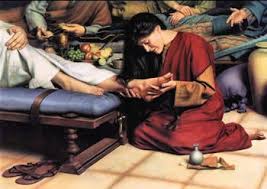
Saturday Daylight hours Nisan 9 - Saturday March 31st Daylight hours
Mark 11:1 Now when they were getting near to Jerusalem, to Beth′pha·ge and Beth′a·ny at the Mount of Olives, he dispatched two of his disciples 2 and told them: “Go into the village that is within sight of YOU, and as soon as YOU pass into it YOU will find a colt tied, on which none of mankind has yet sat; loose it and bring it. 3 And if anyone says to YOU, ‘Why are YOU doing this?’ say, ‘The Lord needs it, and will at once send it off back here.’” 4 So they went away and found the colt tied at the door, outside on the side street, and they loosed it. 5 But some of those standing there began to say to them: “What are YOU doing loosing the colt?” 6 They said to these just as Jesus had said; and they let them go.
7 And they brought the colt to Jesus, and they put their outer garments upon it, and he sat on it. 8 Also, many spread their outer garments on the road, but others cut down foliage from the fields. 9 And those going in front and those coming behind kept crying out: “Save, we pray! Blessed is he that comes in Jehovah’s name! 10 Blessed is the coming kingdom of our father David! Save, we pray, in the heights above!” 11 And he entered into Jerusalem, into the temple; and he looked around upon all things, and, as the hour was already late, he went out to Beth′a·ny with the twelve.
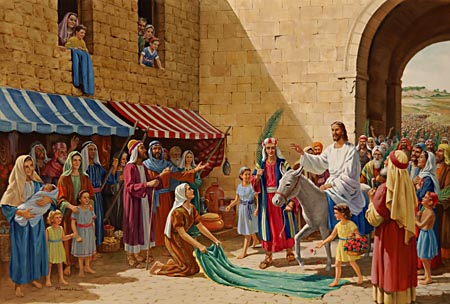
Nisan 10 Daylight events - Monday April 2
Mark 11:12 The next day, when they had come out from Beth′a·ny, he became hungry. 13 And from a distance he caught sight of a fig tree that had leaves, and he went to see whether he would perhaps find something on it. But, on coming to it, he found nothing but leaves, for it was not the season of figs. 14 So, in response, he said to it: “Let no one eat fruit from you anymore forever.” And his disciples were listening.
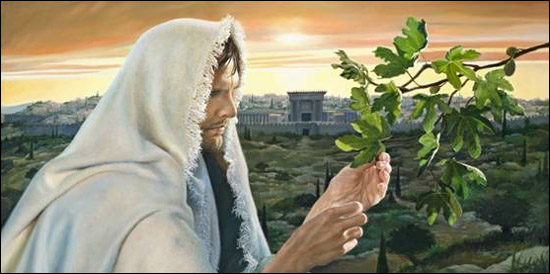
15 Now they came to Jerusalem. There he entered into the temple and started to throw out those selling and buying in the temple, and he overturned the tables of the money changers and the benches of those selling doves; 16 and he would not let anyone carry a utensil through the temple, 17 but he kept teaching and saying: “Is it not written, ‘My house will be called a house of prayer for all the nations’? But YOU have made it a cave of robbers.” 18 And the chief priests and the scribes heard it, and they began to seek how to destroy him; for they were in fear of him, for all the crowd was continually being astounded at his teaching.
19 And when it became late in the day, they would go out of the city.
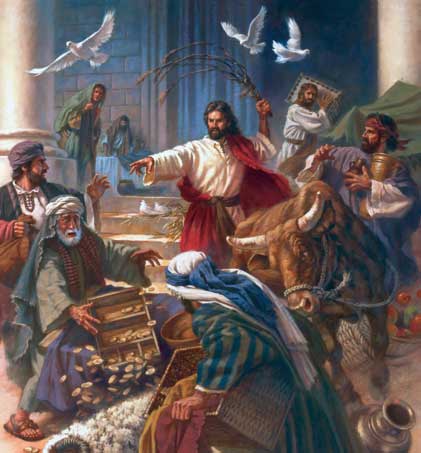
Im going to present each day of the final week of Jesus life with the passage of gospel showing what occurred on each day. The first day begins at Saturday Nisan 9th. The day's on the jewish calander begin in the evening and end the following evening. So Saturday Nisan 9th begins on Saturday March 31st at sundown & ends Saturday March 31st at Sunset.
Saturday Evening Nisan 9 - Saturday March 31st 2012 After Sundown.
Mark 14:3-9 And while he was at Beth′a·ny in the house of Simon the leper, as he was reclining at the meal, a woman came with an alabaster case of perfumed oil, genuine nard, very expensive. Breaking open the alabaster case she began to pour it upon his head. 4 At this there were some expressing indignation among themselves: “Why has this waste of the perfumed oil taken place? 5 For this perfumed oil could have been sold for upward of three hundred de·nar′i·i and been given to the poor!” And they were feeling great displeasure at her. 6 But Jesus said: “Let her alone. Why do YOU try to make trouble for her? She did a fine deed toward me. 7 For YOU always have the poor with YOU, and whenever YOU want to YOU can always do them good, but me YOU do not have always. 8 She did what she could; she undertook beforehand to put perfumed oil on my body in view of the burial. 9 Truly I say to YOU, Wherever the good news is preached in all the world, what this woman did shall also be told as a remembrance of her.”
Saturday Daylight hours Nisan 9 - Saturday March 31st Daylight hours
Mark 11:1 Now when they were getting near to Jerusalem, to Beth′pha·ge and Beth′a·ny at the Mount of Olives, he dispatched two of his disciples 2 and told them: “Go into the village that is within sight of YOU, and as soon as YOU pass into it YOU will find a colt tied, on which none of mankind has yet sat; loose it and bring it. 3 And if anyone says to YOU, ‘Why are YOU doing this?’ say, ‘The Lord needs it, and will at once send it off back here.’” 4 So they went away and found the colt tied at the door, outside on the side street, and they loosed it. 5 But some of those standing there began to say to them: “What are YOU doing loosing the colt?” 6 They said to these just as Jesus had said; and they let them go.
7 And they brought the colt to Jesus, and they put their outer garments upon it, and he sat on it. 8 Also, many spread their outer garments on the road, but others cut down foliage from the fields. 9 And those going in front and those coming behind kept crying out: “Save, we pray! Blessed is he that comes in Jehovah’s name! 10 Blessed is the coming kingdom of our father David! Save, we pray, in the heights above!” 11 And he entered into Jerusalem, into the temple; and he looked around upon all things, and, as the hour was already late, he went out to Beth′a·ny with the twelve.

Nisan 10 Daylight events - Monday April 2
Mark 11:12 The next day, when they had come out from Beth′a·ny, he became hungry. 13 And from a distance he caught sight of a fig tree that had leaves, and he went to see whether he would perhaps find something on it. But, on coming to it, he found nothing but leaves, for it was not the season of figs. 14 So, in response, he said to it: “Let no one eat fruit from you anymore forever.” And his disciples were listening.

15 Now they came to Jerusalem. There he entered into the temple and started to throw out those selling and buying in the temple, and he overturned the tables of the money changers and the benches of those selling doves; 16 and he would not let anyone carry a utensil through the temple, 17 but he kept teaching and saying: “Is it not written, ‘My house will be called a house of prayer for all the nations’? But YOU have made it a cave of robbers.” 18 And the chief priests and the scribes heard it, and they began to seek how to destroy him; for they were in fear of him, for all the crowd was continually being astounded at his teaching.
19 And when it became late in the day, they would go out of the city.


